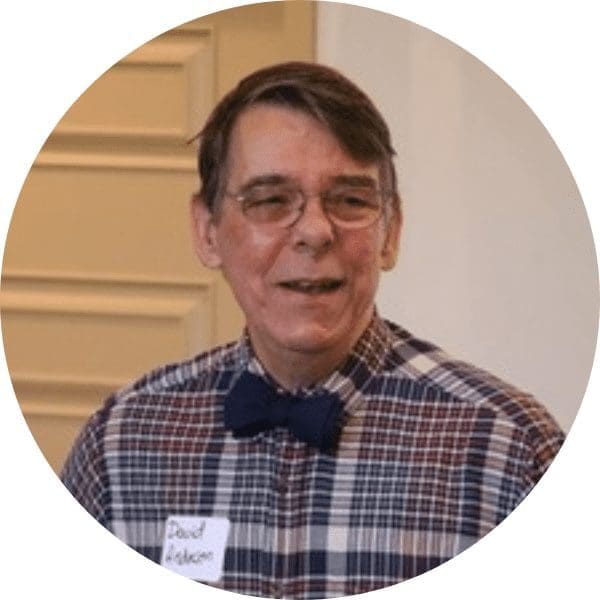Using System Dynamics to Teach and Learn about COVID 19
This Webinar is free due to the generous contribution of the University at Albany and California State University, Chico
The COVID Pandemic constituted a dynamic and complex problem challenging leaders and managers to design policies facing difficult questions such as:
- Do we still need to wear masks?
- Should the government mandate wearing masks?
- What happens if everyone does (or does not) get vaccinated?
- When will the next surge happen?
- How do we know if the pandemic is over?
Systems thinking and simulation provide tools and methods to explore these important questions with a variety of audiences. Learn how a team of experts is using System Dynamics to help different audiences to answer these questions:
- Using a case-based System Dynamics simulation to explore policy choices in an undergraduate public policy capstone course.
- Using a set of self-paced learning modules to build a simulation model from the ground up.
Ali N. Mashayekhi is a retired professor of management from the Sharif University of Technology in Tehran, Iran where he taught System Dynamics and strategic management. He received his BSc in Mechanical Engineering from Sharif University and his Ph.D. in System Dynamics from MIT in Cambridge Massachusetts.
Babak Bahaddin works as an associate consultant at isee systems. Babak holds a bachelor’s degree in engineering from Sharif University of Technology, and a Ph.D. in Information Science, from the University at Albany, State University of New York.

Daniel Gordon trained in System Dynamics at Rockefeller College, the State University of New York at Albany. He is retired from the New York State Health Department, where he spent 34 years working in health care policy analysis and HIV epidemiology.
David Andersen is Professor Emeritus in Public Administration and Information Science at the University at Albany – SUNY. He is a former President and Vice President for Finance for the System Dynamics Society as well as a winner of the Forrester Award.
Hyunjung Kim is a professor of management at California State University, Chico. She teaches strategy and management courses using system dynamics. She received her Ph.D. in Public Administration from the Rockefeller College of Public Affairs and Policy, University at Albany.
“Management of Systemic Risk, Illustrated by the Covid Pandemic” by Jose Julio Gonzalez
Jose Julio Gonzalez (Agder University, Norway) will present “Management of Systemic Risk, Illustrated by the Covid Pandemic” on Thursday, 20 January 2022. The talk will be in German and is organised by the German Chapter of the System Dynamics Society (DGSD). If you are interested in the Zoom link, please send an email to kommunikation@systemdynamics.de.
Online-Vortrag „Management von systemischem Risiko, illustriert an der COVID-Pandemie“
Am Donnerstag, 20.01.2022, 16:00 Uhr hält Prof. José Gonzalez, Agder University (Norwegen) einen Zoom-Vortrag zum Thema „Management von systemischem Risiko, illustriert an der COVID-Pandemie“. José ist langjähriges Mitglied der System Dynamics Society und beschäftigt sich seit langem mit systemischem Risikomanagement, sowohl mit System Dynamics als auch mit anderen Methoden des Systemdenkens. Organisiert wird der Vortrag vom Arbeitskreis „Nachhaltigkeitstransformation“, steht aber allen Mitgliedern der DGSD offen. Bei Interesse am Zoom-Link bitte den Arbeitskreis kontaktieren oder kommunikation@systemdynamics.de.
Behavioral Dynamics of COVID-19
Behavioral Dynamics of COVID-19
Over a year since the World Health Organization declared COVID-19 a pandemic, its true global magnitude remains unknown. Official counts of cases and deaths are known to underestimate the true magnitude of the pandemic, but how much remains uncertain. Differences in testing and treatment capacity, unknowns like asymptomatic transmission, and most importantly, variable responses to the risk of the virus create wide variation in incidence, prevalence, and mortality across countries and over time. This isn’t just about getting the stats right. If official counts of cases and deaths are too low, people may not take adequate precautions and governments may (and have) re-opened their economies too soon, leading to more deaths. Effective responses to the pandemic require an understanding of how these factors interact to shape its trajectory.
To address this need, we developed a model that accounts for behavioral factors such as risk-driven contact reduction, improved treatment, and adherence fatigue, as well as asymptomatic transmission, impacts of weather, disease acuity, and testing and hospital capacity. Estimating this model across all nations that publish sufficient data—a total of 92, spanning about 5 billion people —we found the actual magnitude of the epidemic to be much larger than reported. Specifically, as of the end of 2020, we find cumulative cases were more than seven times larger than official reports, and COVID-19 deaths were about 44% higher than reported. We also found huge variation in death rates, with some countries having over 100 times the per capita deaths of others.
The greatest driver of this wide variation is not demographics, weather, or health care capacity, but rather how responsive are the people and governments of each nation to the threat. Do countries act proactively and aggressively to quash any nascent outbreaks, or do they wait until the situation is severe and hospitals overwhelmed before responding?
Some countries, like Australia, China, New Zealand, and Singapore, have been proactive, responding aggressively to even small spikes in cases, and have largely succeeded in bringing their epidemics under control at death rates below 0.1 per million people per day. Even after caseloads and deaths fell, they remained vigilant, kept masks on and gatherings restricted, and continued testing and tracing until the virus was almost completely stamped out. Despite occasional disruptions from new outbreaks, life in these nations has largely stabilized at a new normal, with few cases and deaths.
Others, including the U.S., many European and South American countries, and India, have been more reactive. Seeking to minimize economic disruption, they delayed action until climbing deaths forced their hands. As each wave subsided, under pressure to reopen their economies, they eased restrictions, only to see cases climbing again. Eventually, faced with rapidly growing outbreaks, they have been forced to lock down again anyway.
Ultimately, countries actually have little choice in how much they must reduce contact levels to control the epidemic. Few communities are willing to tolerate unchecked outbreaks and the horrendous number of deaths that result. By choice or the force of intolerable death rates, all countries have to cut back high-risk interactions – keeping people at home, restricting gatherings, avoiding restaurants and travel, and so on – to control the virus. How much these interactions have to be reduced to keep an outbreak from growing depends largely on the contagiousness of the virus itself, and thus remains similar across nations. What varies across countries is how many cases and deaths it takes to induce strong enough actions to reduce contacts to the required threshold, https://buckfirelaw.com/xanax-alprazolam/ bend the curve, and stop the growing outbreak. In short, until vaccination is widespread all communities pay a similar price to sufficiently bring down their contacts, yet the more responsive ones save many more lives.
To help policymakers and the public better understand these dynamics, we created a free online simulator that allows you to experiment with your own scenarios for vaccination and other policies, and to explore how to change the course of the epidemic over the coming months.
The world is working hard to roll out mass vaccination, but it will still be many months before most people are vaccinated worldwide. Understanding the central role of responsiveness in shaping the dynamics of outbreaks remains critical – it is still not too late for a swift response to both minimize economic disruptions and save lives.
Rahmandad, Lim, and Sterman are coauthors of “Behavioral dynamics of COVID-19: estimating under-reporting, multiple waves, and adherence fatigue across 19 nations,” which is forthcoming in System Dynamic Review. Rahmandad and Lim are coauthors of “Risk-Driven Responses to COVID-19 Eliminate the Tradeoff between Lives and Livelihoods.”
Recent Posts
Society Governance Updates
Society Governance Updates Welcome, Allyson! New President Allyson Beall King joined the Policy Council as our 2024 President. Her primary role is as director of the Washington State University School of the Environment, which focuses on regional ecologies and our...
Call for Presenters: Seminar Series
Call for Presenters: Seminar Series We at the System Dynamics Society are continually seeking vibrant and knowledgeable presenters for our ongoing Seminar Series. As we unfold the calendar, there’s always a place for more insights, experiences, and expertise to enrich...
Honoring Excellence: A Glimpse into the Awards of the International System Dynamics Conference
Honoring Excellence: A Glimpse into the Awards of the International System Dynamics Conference The International System Dynamics Conference brings together experts, practitioners, and students to exchange ideas, showcase real-world applications, and celebrate...
Upcoming Events

Virtual Career Fair by MINDS & SDS
The Master students in System Dynamics at the University of Bergen, in partnership with the System Dynamics Society, are excited to host an enriching Virtual Career Fair. This event is designed to connect students, alumni, and professionals in the field of System...
Recent Business cases
A Design Value Calculator: A System Dynamics Boardgame
A Design Value Calculator: A System Dynamics Boardgame EXECUTIVE Summary Product design is a specific form of complex innovation that touches all areas of an organization’s management. While entrepreneurs recognise the value of design, they often tend to focus...
The World Bank Uses System Dynamics to Identify Root Causes of Poverty
The World Bank Uses System Dynamics to Identify Root Causes of Poverty EXECUTIVE Summary Madagascar has one of the highest poverty rates in the world. In 2022, an astonishingly three out of every four people in Madagascar lived below the poverty line. Poverty has...
Fast-Track Cities Uses System Dynamics to Enhance HIV Care
Fast-Track Cities Uses System Dynamics to Enhance HIV Care EXECUTIVE Summary Low levels of viral suppression at 69% for people with HIV make it hard to believe the 95% target level will be achieved by 2030 in St. Louis, USA. As a solution, Fast-Track Cities-STL opted...









